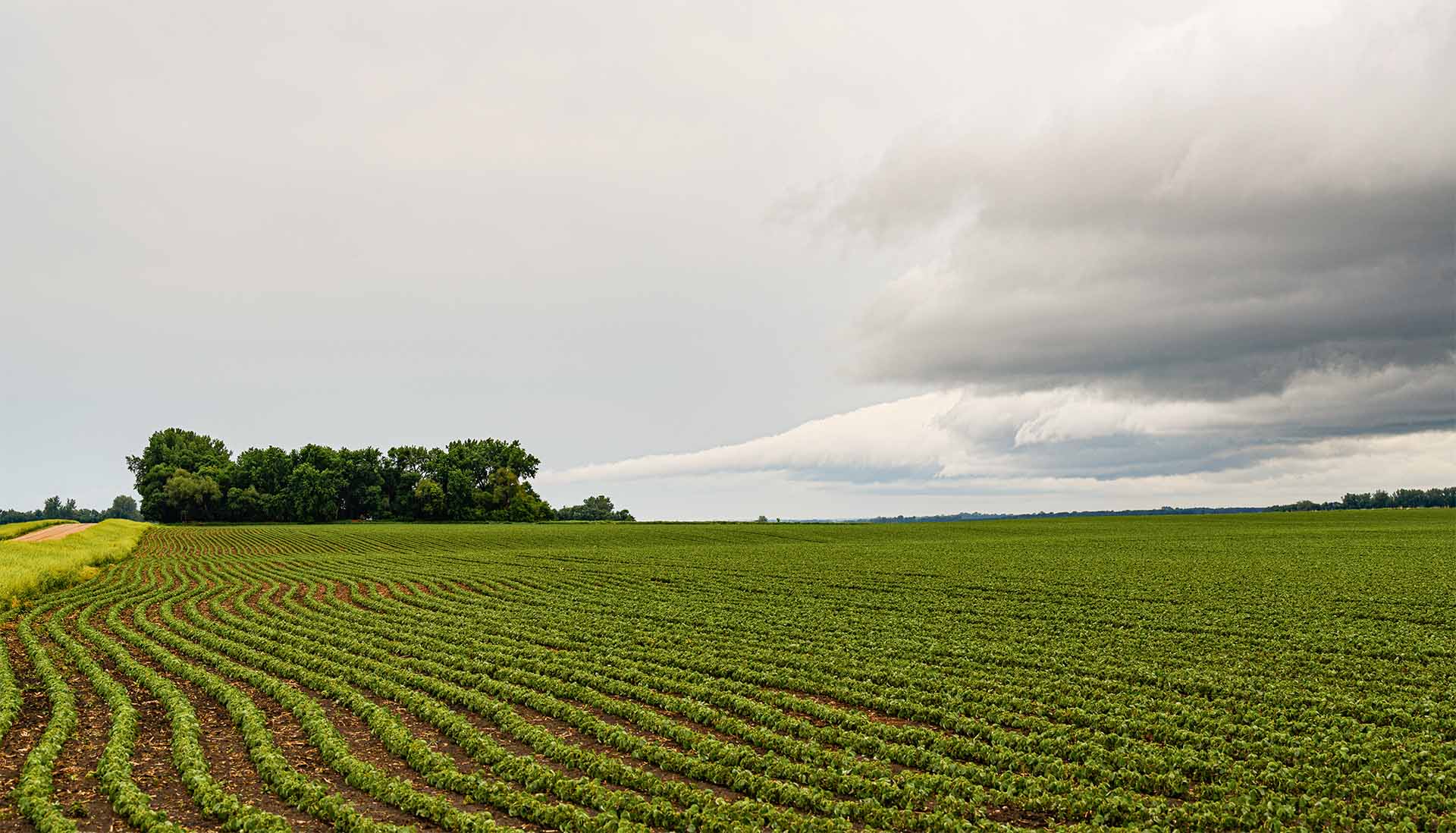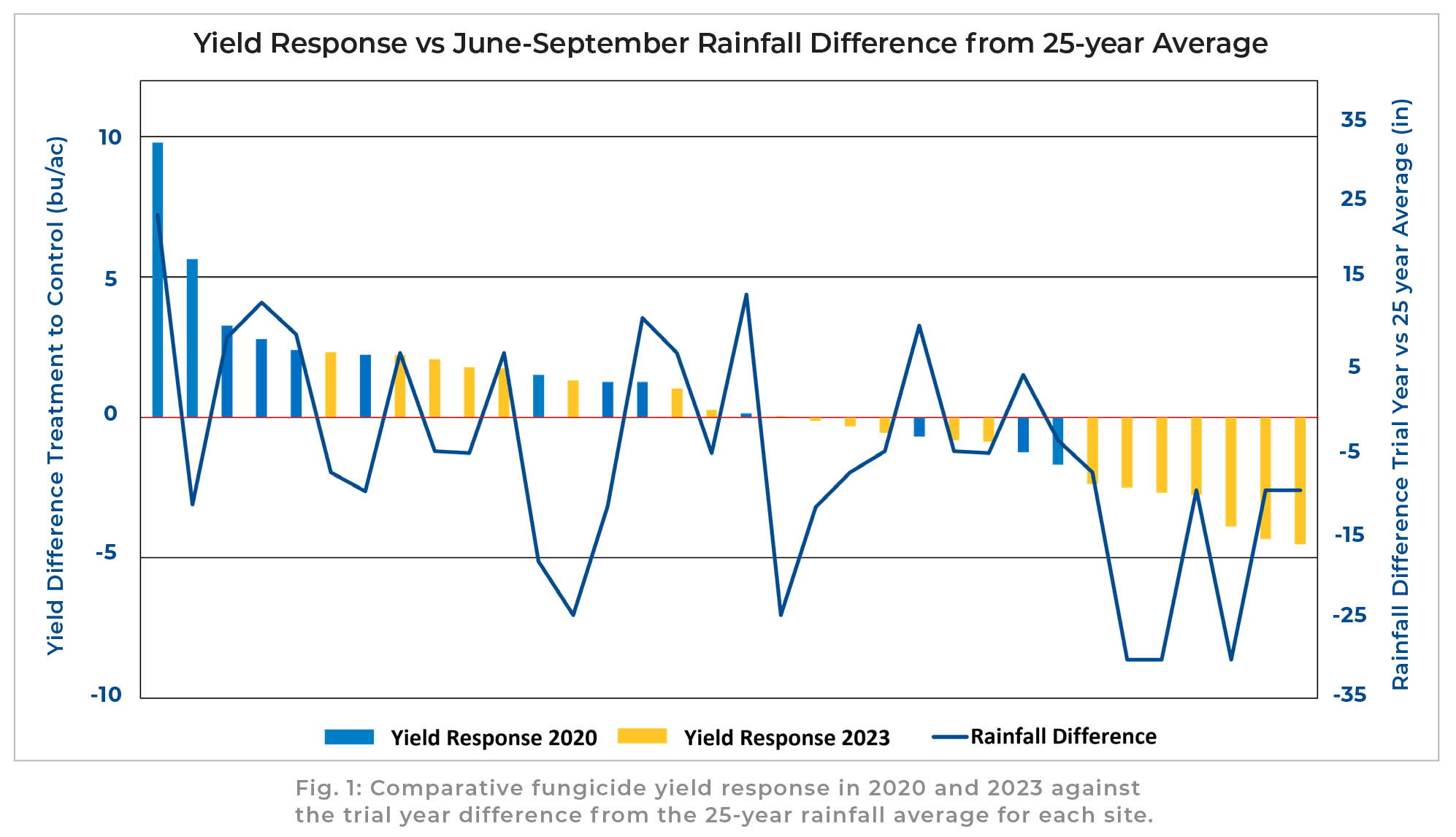
(Photo: Iowa Soybean Association / File Photo)
Protecting crop yields and profitability
April 30, 2024
By Suzanne Fey and Alex Litvin
The agricultural landscape is laden with challenges. Fluctuating weather, including temperature and humidity variations, can significantly impact the proliferation of fungal pathogens. Because of this, the role of fungicides becomes increasingly critical and serves as the frontline defense against unpredictable environmental conditions that can promote fungal growth.
The Iowa Soybean Association (ISA) is actively exploring a range of fungicides to understand their effect on final yields and return on investment. Frogeye leaf spot, among other fungi, are significant threats to soybean yield in Iowa. Caused by the fungus Cercospora sojina, it targets leaves, creating lesions that lead to defoliation, impacting plant growth and yield. Frogeye is promoted through warm and humid conditions, providing an ideal environment for its proliferation. By evaluating different fungicide groups (3, 5, 7 and 11), ISA aims to inform farmers about which tools are effective for managing fungal diseases in Iowa fields.
Exploring options
Recognizing the diverse range of fungal threats, ISA has conducted extensive research to evaluate various fungicides’ efficacy. However, in 2023, Iowa experienced a notably dry season (Fig. 1), which led to minimal fungal pressures across soybean fields.
Scouting reports indicated low disease pressures, with sparse scout reports of frogeye, making it challenging to quantify fungicide efficacy accurately. Several fungicides were evaluated that year, including Lucento (group 3+7), Miravis Neo (group 3+7+11), and Veltyma (group 3+11), with minimal impact observed on crop performance (Fig. 1).
Overall, in 2023, there was no statistical difference between soybean crops treated with a fungicide (average yield of 62 bushels per acre) versus untreated (average yield of 63 bushels per acre).
However, this has not always been the case, and previous years, characterized by more favorable moisture conditions, provided a more conducive environment for evaluating fungicide efficacy.
In 2020, fungicides such as Delaro (group 3+11), Miravis Neo and Veltyma showcased promising results in enhancing soybean yields under moderate mold pressures. However, whether this pressure was due to Frogeye or another fungal pathogen is not understood. These three fungicide products resulted in similar average yield gains of approximately 1.9 bushels per acre.

Key takeaways and observations
While fungicides play a crucial role in mitigating pathogen damage, their efficacy is influenced by environmental conditions and the specific fungal pressures present.
In examining the differing response to fungicide application in 2023 versus that of 2020, a key element is the amount and timing of rainfall.
Fungicide-treated soybeans in 2020 had higher yields than untreated when the rainfall was higher than its 25-year average in Iowa (Fig. 1). In short, conditions must exist for the disease pressure to see the effect of fungicide protection in the field. Without the environmental conditions for pressure, the application of fungicides appears to impart no additional benefits.
Applying fungicides under minimal to no disease pressure does not typically damage plants. Junqueira et al. (2021) reported that no measurable effects were observed when healthy soybeans were treated with group 3 and 7 fungicides on the plants’ normal growth and development. However, in the field, there is a rich ecosystem of other life, and it is believed that over-application of fungicides could harm beneficial fungi and insects, resulting in increased pest pressure.
Also, the cost of chemicals and the application can result in a negative return on investment if seasonal moisture is insufficient.
Proper application, including adherence to recommended dosages and rotation strategies, minimizes resistance development and optimizes economic returns.

Looking ahead
In the pursuit of safeguarding crop yields, the journey toward understanding and harnessing the potential of fungicides is an ongoing endeavor, shaping the future resilience of agricultural systems against fungal threats.
As field conditions evolve, ongoing research is imperative to refining fungicide strategies. ISA remains committed to exploring new avenues for managing fungal pathogens effectively. Farmers are encouraged to engage with their local ISA research agronomists and participate in fungicide trials to contribute to this vital area of agricultural research.
Back